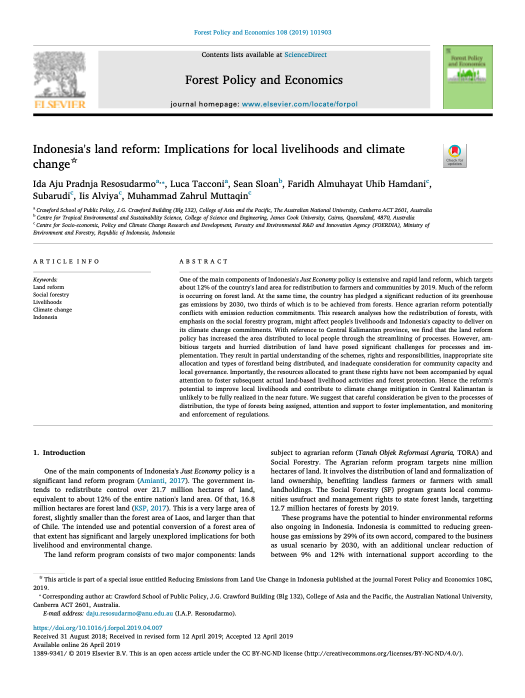Resource information
One of the main components of Indonesia's Just Economy policy is extensive and rapid land reform, which targets about 12% of the country's land area for redistribution to farmers and communities by 2019. Much of the reform is occurring on forest land. At the same time, the country has pledged a significant reduction of its greenhouse gas emissions by 2030, two thirds of which is to be achieved from forests. Hence agrarian reform potentially conflicts with emission reduction commitments. This research analyses how the redistribution of forests, with emphasis on the social forestry program, might affect people's livelihoods and Indonesia's capacity to deliver on its climate change commitments. With reference to Central Kalimantan province, we find that the land reform policy has increased the area distributed to local people through the streamlining of processes. However, ambitious targets and hurried distribution of land have posed significant challenges for processes and implementation. They result in partial understanding of the schemes, rights and responsibilities, inappropriate site allocation and types of forestland being distributed, and inadequate consideration for community capacity and local governance. Importantly, the resources allocated to grant these rights have not been accompanied by equal attention to foster subsequent actual land-based livelihood activities and forest protection. Hence the reform's potential to improve local livelihoods and contribute to climate change mitigation in Central Kalimantan is unlikely to be fully realized in the near future. We suggest that careful consideration be given to the processes of distribution, the type of forests being assigned, attention and support to foster implementation, and monitoring and enforcement of regulations.


